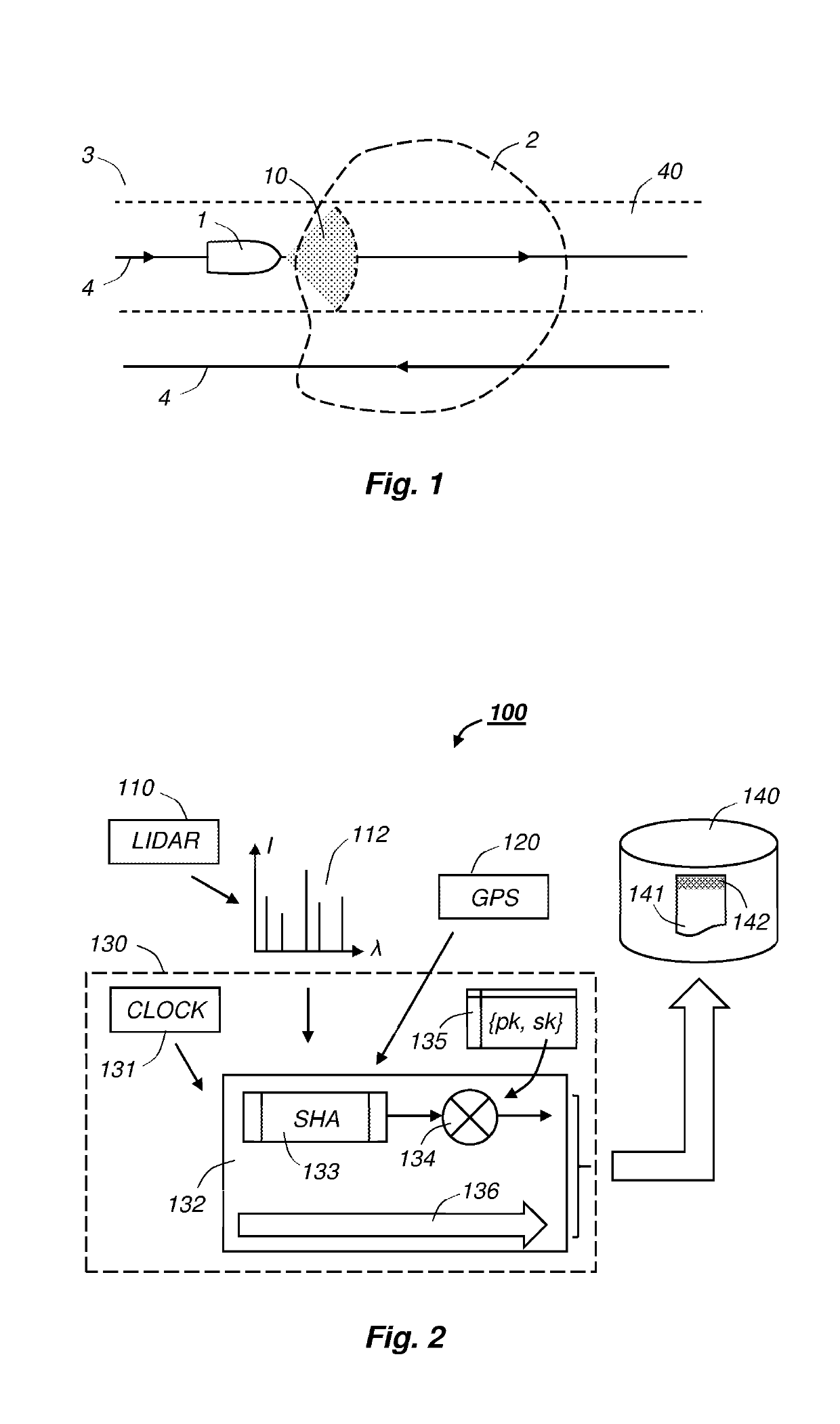Hydrocarbon detection
a technology of hydrocarbons and detection methods, applied in the field of hydrocarbon detection, can solve the problems of direct threat to ship traffic, ropes, affecting the detection of oil spills, etc., and achieve the effect of facilitating the identification of oil spills
- Summary
- Abstract
- Description
- Claims
- Application Information
AI Technical Summary
Benefits of technology
Problems solved by technology
Method used
Image
Examples
Embodiment Construction
[0028]The drawings are intended to illustrate the principle of the invention, and are not to scale. Numerous details known to those skilled in the art are omitted for clarity.
[0029]FIG. 1 shows a marine vessel 1 approaching a polluted area 2 on a sea surface 3. The marine vessel may perform some unrelated task, e.g. a seismic survey, such that the present environmental survey is a bonus at little additional cost. As shown, the vessel 1 travels along a path 4 that might be followed by a seismic survey vessel. However, the path 4 might be any path followed by a merchant ship, cruise ship or other marine vessel over an ocean or along a coast. A detector aboard the marine vessel 1 scans a sector 10, e.g. in front of the vessel. Thus, the marine vessel 1 detects pollution on or at the sea surface 3 in a region 40 along the predetermined path 4.
[0030]The region 40 may include a water column below the sea surface 3 to identify hydrocarbons and solid objects at, as opposed to on, the sea su...
PUM
| Property | Measurement | Unit |
|---|---|---|
| wavelength | aaaaa | aaaaa |
| wavelengths | aaaaa | aaaaa |
| distance | aaaaa | aaaaa |
Abstract
Description
Claims
Application Information
 Login to View More
Login to View More - R&D
- Intellectual Property
- Life Sciences
- Materials
- Tech Scout
- Unparalleled Data Quality
- Higher Quality Content
- 60% Fewer Hallucinations
Browse by: Latest US Patents, China's latest patents, Technical Efficacy Thesaurus, Application Domain, Technology Topic, Popular Technical Reports.
© 2025 PatSnap. All rights reserved.Legal|Privacy policy|Modern Slavery Act Transparency Statement|Sitemap|About US| Contact US: help@patsnap.com

